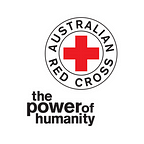After the flood: the things that can’t be destroyed
Emmanuel Vella surveys the mountain of his family’s mud-drenched possessions piled up on his footpath and shrugs.
He’s lived in this home in Drapers Siding, inland of Mackay, for 37 years. His kids grew up here. The house has seen its share of cyclones and floods but this is the worst they’ve ever experienced.
They’ve lost furniture, cars, mowers, a pool table, a washing machine and countless family mementoes. But they haven’t lost their spirit.
Emmanuel has vowed to rebuild in the house and community he says mean so much to him.
Emmanuel says the support he’s received — including from Red Cross emergency volunteers — has made it clear to him: Drapers Siding is where he belongs.
The stories are similar wherever we visit in the wake of the severe Cyclone Debbie, which claimed at least 12 lives and caused damage estimated at more than $1 billion along a vast stretch of eastern Australia.
Further inland in Eton, mother-of-four Tanya Hornsby is finding it a bit harder. She says while she tried to keep calm in front of her two young boys, the sudden, unexpected nature of the flooding that came with Cyclone Debbie caused her a lot of distress.
“In a disaster I sort of don’t cope,” she says. “If I see my place in dire straits, I just panic, hit the panic button and while I’m in that panic bubble I don’t listen, I don’t comprehend anything, I just see devastation. But because I had the kids here, I thought no, I’ve got to keep it together.”
Her one piece of advice to others who go through a natural disaster? Use Red Cross’ Register.Find.Reunite. service, which connects people who are separated or uncontactable during a disaster.
“Definitely. I think it’s a great thing, I think everyone, if they’ve got a laptop, any type of smart phone, that should be the first thing they should do is just register, even if it’s just for moral support, at least you’re out there, you know?”
Cyclone Debbie’s destruction reached as far south as northern New South Wales, 1200 km away.
In Lismore, artist Kerrie Divett’s possessions are piled outside her house, caked in mud. Her greatest loss is the children’s notes and photos. She’s carried them with her for decades.
She’s been having a tough couple of years, having battled serious health issues. She says she’s probably still in shock.
But one thing she does know is she will recover, drawing on her own inner strength and the amazing support from her local community.
“I’ve lived in Lismore for 36 years, and the amount of support and help I’ve felt since this flood has been just incredible,” she says.
Local Red Cross volunteer Kerrie Gray nods her head. “That’s why we call it Lovemore.”
It’s a sentiment Terry Campbell says he’s also familiar with. He’s at the Murwillumbah Recovery Centre with his daughter and two grandchildren who are joyously running around on the oval after being cooped up in a flood-bound house for days.
The kids are happy to receive their trauma teddies, lovingly knitted by an anonymous Red Cross volunteer, while Terry is just keen to catch up with other adults and share stories.
All around the stories are of destruction and survival. The scale of some of the losses is mind-boggling.
But so too is the resilience in these communities.
Help Red Cross continue its work with communities affected by Cyclone Debbie.
Words: Susan Cullinan
Pictures: Dilini Perera, Amelia Wong
